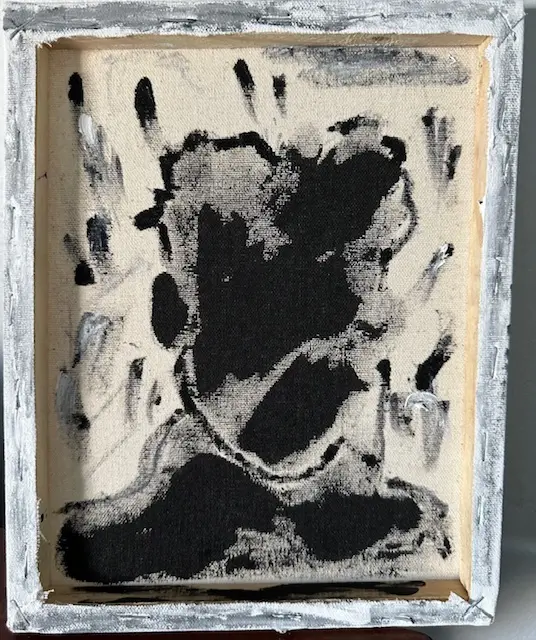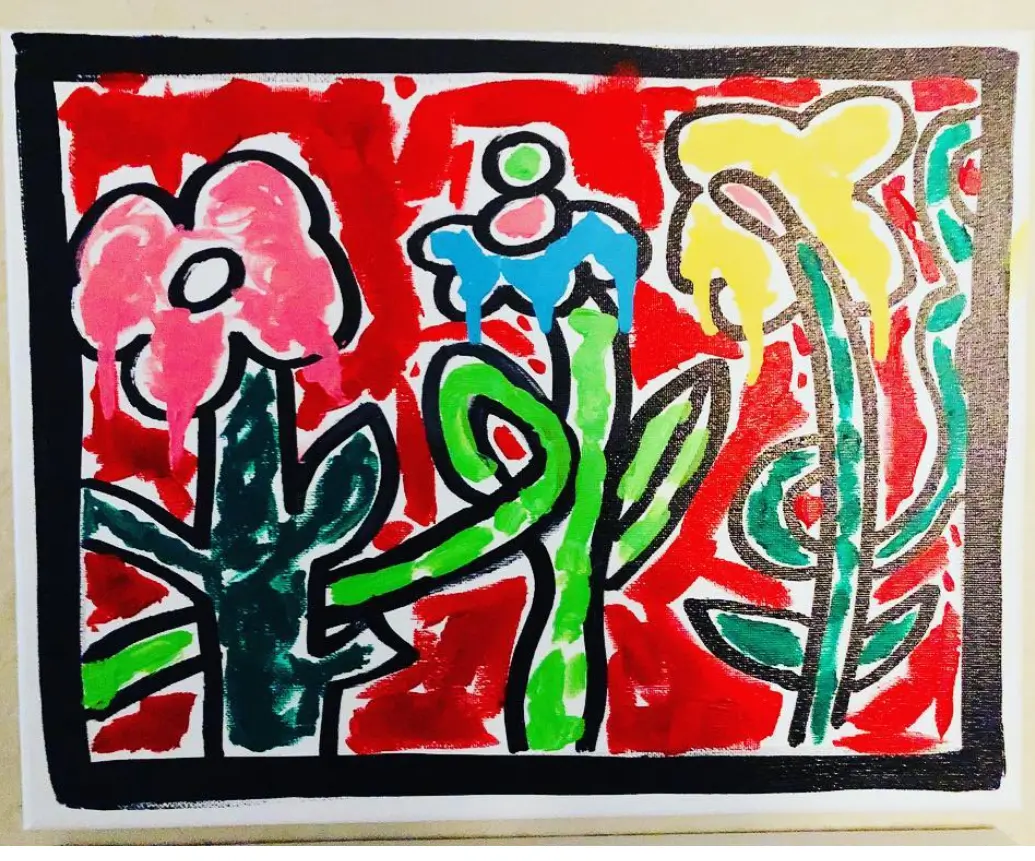If you’re looking to save money on art supplies, you’ve come to the right blog post! I’ve got some great tips on how to save money on art supplies that I’d love to share with you. These tips are based on my decades of experience in the art world. Back when I first started painting, I had to find ways to save money on supplies out of necessity. But nowadays, I still love being frugal for different reasons. As Ben Franklin once said, “A penny saved is better than a penny earned”.
If you can save money on art supplies, you’ll end up paying less in and earning more profit on the sale of your artwork. And don’t worry, the quality of your art doesn’t have to suffer because of it. And believe me, I use many coats of paint on all my paintings still!
While using coupons is one way to save money, there are other strategies that can be even more effective. For example, reducing waste and increasing the efficiency of your processes can play a significant role in saving money on art supplies.

Using Your Paint Wisely
Let me share with you a tip on how to save money on paint. By painting in thinner layers, you can get up to three times the coverage compared to using thick layers. Even though my artwork doesn’t apply to this – as I love to pile on the layers of paint! But for others, it could be helpful.
I learned this interesting fact while reading about Liquitex Acrylics. Their line of Soft Body acrylics has been found to have three times the coverage of the heavy body acrylics. This is because heavy body paint is applied in a thicker layer compared to the thinner soft body acrylics.
By using Soft Body Acrylics, you can create a thinner layer of paint that will cover more square footage. This means that one tube of soft body acrylics is equivalent to about three tubes of heavy body acrylics. This is a great way to save money on paint without compromising the quality of your artwork. The same principle applies to other brands of acrylics as well. For instance, Golden Fluid Acrylics are expected to provide more coverage than their Heavy Body Acrylics. Since the cost of artist-quality paints can be very high, all of these tips for saving paint are worth considering.
To give you an idea of the cost, let’s do some math. An average 2oz tube of paint costs around $9. A gallon of paint contains 128oz, so you would need 64 tubes of paint to make a gallon. That’s a total of $576 per gallon of paint! As you can see, the cost of paint can add up quickly. That’s why every bit of paint that you can save is worth the effort. So, consider these tips for saving paint to help you stay within your budget while creating beautiful art.
By painting in a watercolor style with acrylics, you can further extend your paint and make it last longer. To achieve this, you can use a combination of water and acrylic medium to thin out soft body acrylics or use acrylic inks. This technique can make acrylics look like watercolors, which can add a unique touch to your artwork. I understand that painting styles are highly personal, and you may not be willing to sacrifice your thick brushstrokes to save money. But don’t worry, there are ways to save paint even if you prefer applying the paint in a thick manner.

Use Paint Mediums
If painting in thin layers isn’t your style, there’s another way to create texture in your paintings without spending too much on paint. You can use acrylic gels and mediums to achieve the desired texture. Using gels and mediums allows you to create thick textures in your paintings without breaking the bank. These mediums are less expensive because they don’t contain pigments, which are the most expensive component of acrylic paint.
One way to use these mediums is to apply them to the canvas before you start painting. This can help you create subtle brushstrokes that will show through in the final painting. You can also use gels and modeling pastes to create thick and interesting textures. If you want to build up texture in your paintings without spending too much on paint, consider using acrylic gels and mediums. It’s an effective and cost-efficient way to achieve the desired effect.

Conserve Paint
To save money on paint, it’s important to avoid wasting it. Allowing your paints to dry on the palette between painting sessions is one of the main ways that artists waste paint. There’s nothing more wasteful than having paint dry up before you had a chance to use it.
One solution to this problem is to cover your palette with plastic wrap to prevent the acrylic paint from drying out overnight. However, it’s important to be careful when removing the plastic wrap as some of the paint may stick to it. Plastic wrap can only keep the paint moist overnight, and eventually, the paint will dry out.
This is especially true if you’re using palette paper because it absorbs some of the moisture from the paint. In addition to drying the paint out, the moisture can also cause the palette paper to wrinkle. To avoid wasting paint, try to only use the amount of paint you need for your current painting session. If you have leftover paint, you can store it in airtight containers or use a wet palette to keep it moist. By taking these steps, you can save money on paint and reduce waste at the same time.

Keep a Wet Palette
Acrylic artists have found a solution to keeping their paint wet overnight by using old Tupperware containers. By using these containers, the moisture can be locked in and the paint can stay wet. You can even increase the humidity inside the container by placing a wet sponge inside to prevent the paint from drying out. Another option is to squeeze your paint out on a folded wet paper towel, which will help prevent your paint from drying out. However, one issue with using DIY wet palettes is that the sides of the container can often be too tall and get in the way when mixing colors with a palette knife. Additionally, the bottoms of food containers may not be perfectly flat and the corners can be rounded, making it difficult to evenly spread out the paint.
In my experience, among the various DIY palette solutions, the Masterson Stay Wet palette stands out as the best option. It comes with everything needed to get started, including five sheets of palette paper, at a fair price. The wet sponge in the palette does an excellent job of keeping the paint wet while I work.
I no longer need to keep misting the paint with water to keep it wet, and it can stay wet for days. The Masterson palette is a worthwhile investment that will save money on paint over time. I particularly appreciate being able to mix large batches of color and have it stay wet for up to a week while I’m working on a painting.

Recycle Left Over Paint
Don’t waste leftover paint – Instead of throwing away the leftover paint after finishing a painting, I scrape it up, mix it together, and save it for later use. It’s a good way to save money and reduce waste. To store the leftover paint, I use airtight containers that can keep the paint wet until I need it again. I found some disposable salad dressing containers on Amazon with tight-fitting lids that work well for this purpose.
Alternatively, if you prefer sturdier containers, you can try small plastic containers that hold up to 4 tablespoons of paint, which is usually enough for leftover paint. In the video below, you can see how I scrape the used paint off my palette and stir it together, which usually creates a neutral gray color, but the final color may vary depending on the colors used in the painting.

Save Money by Avoiding Expensive Pigments
The cost of a tube of paint depends on the type of pigment it contains, and some colors can be very expensive, costing up to $15 for just 2oz. Cadmiums are a prime example of a costly pigment, often found in the most expensive series of paints. While Cadmium pigments offer bright and opaque colors, other less expensive pigments, such as Naphthol Red Light and Hansa Yellow, can work just as well. Golden Paints also offers a cheaper alternative, with their Hansa Yellow Opaque.
Although Pyrrole Red and Orange are nice colors, they’re just as expensive as the Cadmiums. Liquitex has recently released cadmium-free alternatives in reds, oranges, and yellows that are less toxic and look and behave like the original cadmium colors. Unfortunately, they are still pricey.
Moreover, “hue colors” are cheaper alternatives that mimic the color of the expensive pigment but are made from other, less costly pigments. However, be aware that hue colors may not behave exactly like the original pigment. The more expensive colors also have “Hue” versions available from manufacturers. These are colors created by mixing multiple pigments to approximate the original expensive versions.
For instance, Liquitex produces Cadmium Orange “Hue” which is a combination of Diarylide Yellow, Perinone Orange, and Titanium White. Although it won’t be as opaque as Cadmium Orange, it costs about $5 less. Although they don’t have the same exact properties as the pigments they’re named after, hue colors can be useful. Some hue colors are substitutes for fugitive pigments that are susceptible to fading, with the hue color being a more permanent version of the original color.

Tips for Buying Art Supplies in Bulk
Buying art supplies in bulk is a great way to save money, but it’s important to do it wisely. Before purchasing a large quantity of materials, make sure you can use them up before they expire. For instance, a gallon of acrylic paint may dry out before you have a chance to use it all. However, buying in larger quantities can lead to substantial savings. Here are a few examples:

Save Money on Paint
Although a small 2oz tube may seem cheaper than a 4oz jar, the larger container is actually less expensive per ounce. You can easily calculate the cost per ounce by dividing the price by the amount of paint in the container. Most brands list the volume in both ounces and milliliters, so you can also calculate the cost per milliliter if you prefer.

Buy Art Supplies in Bulk
Purchasing art supplies in bulk can be an effective way to save money, especially for materials that don’t have an expiration date. Canvases, for instance, can last indefinitely if stored properly. If you have a preferred brand of canvases, consider checking if they offer bundles at discounted rates. Many craft supply stores provide bundles of 5 or 10 canvases at a lower price. However, it’s important to do the math and determine the cost per canvas to ensure you’re getting a good deal.
Online retailers like Blick Art Materials also offer discounts on bulk purchases of canvases. Blick Studio canvases, for example, provide savings when you purchase 10 or more of the same size. If you buy 20 or more, you can save even more money. Additionally, Blick’s customer service is exceptional, ensuring any issues you encounter are resolved in a friendly manner.
Remember, as an artist, your goal is to create and express your vision through your work. However, there’s no reason why you can’t also be savvy with your art supply purchases. You don’t have to be a starving artist, if you follow these tips and stay mindful of how you shop for art supplies: you can save money and invest in your creative pursuits without breaking the bank. With the extra money saved, you might even be able to purchase new and exciting materials to explore and expand your artistic abilities even further. So go forth and create, and enjoy the satisfaction of knowing that you’re doing it in the most cost-effective way possible.







